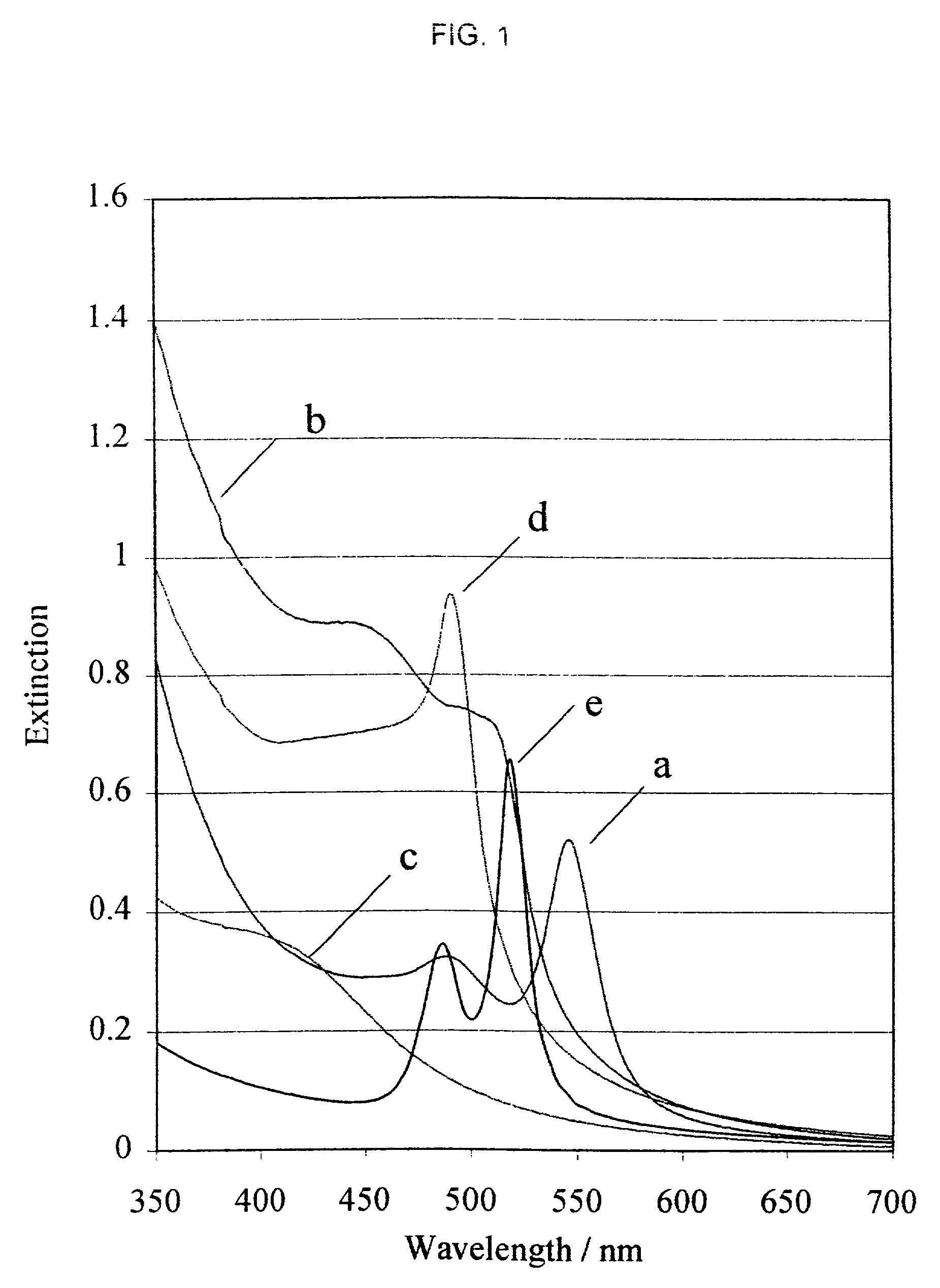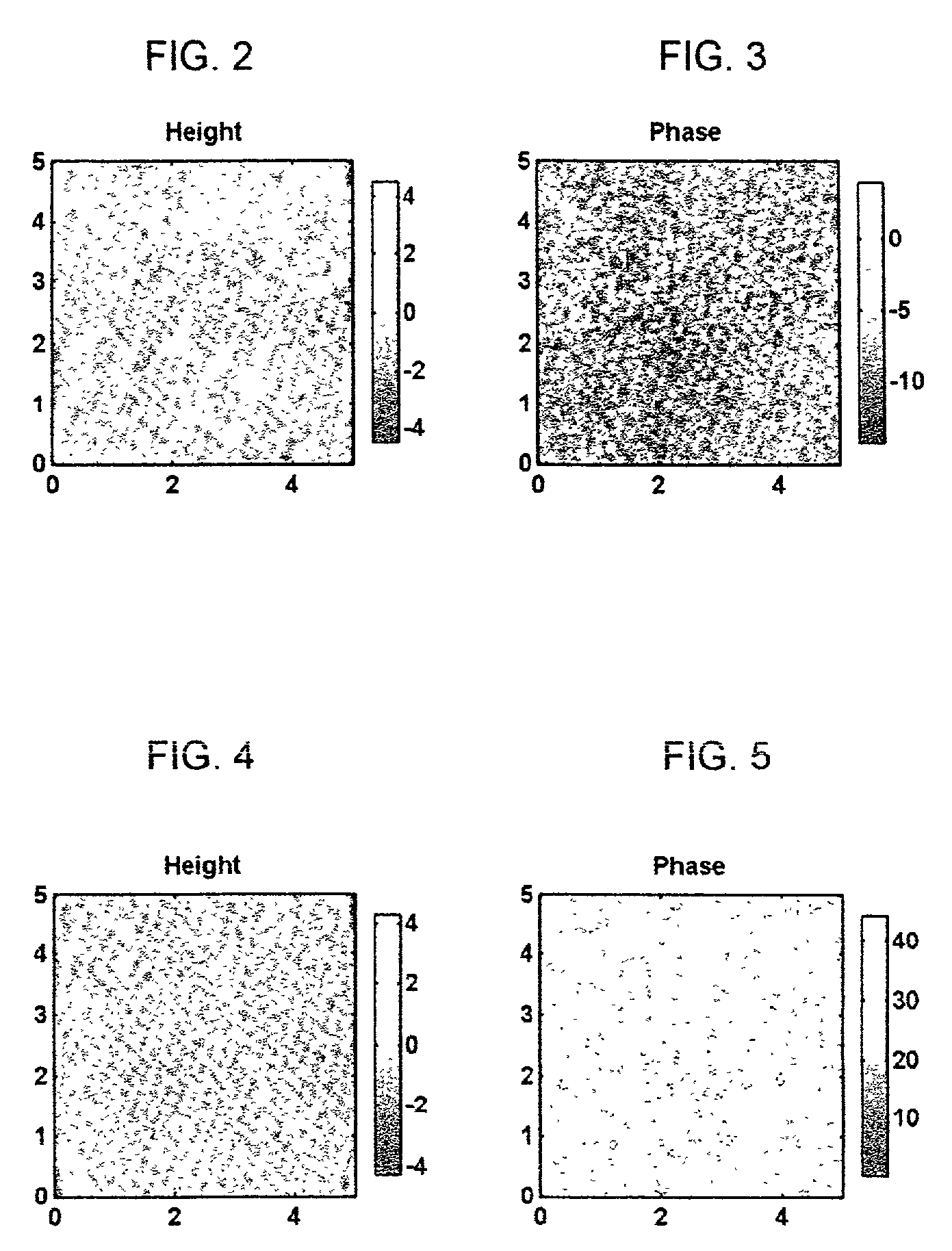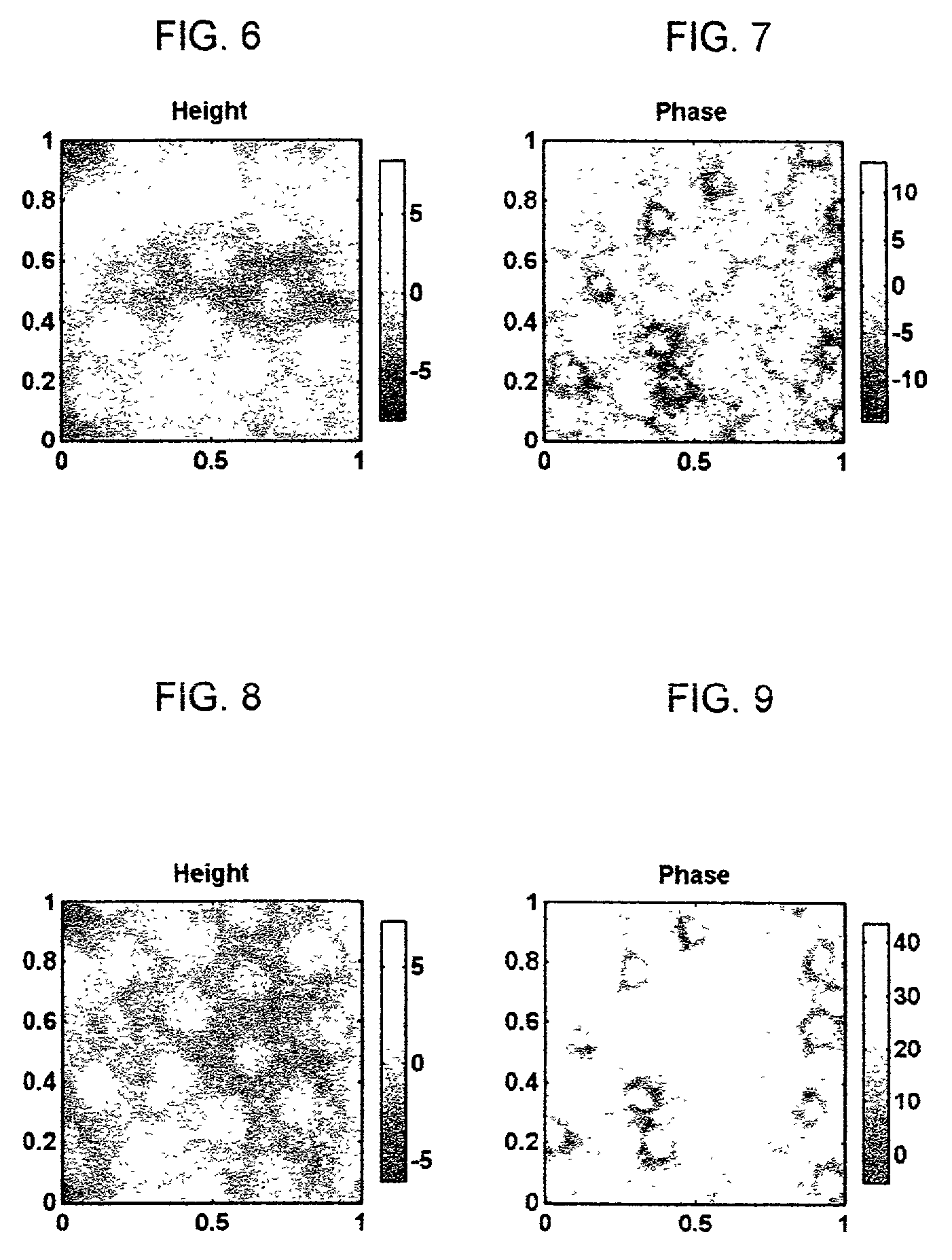Coating compositions having a geometrically ordered array of polymeric particles and substrates coated therewith
a technology of polymeric particles and coating compositions, which is applied in the direction of coatings, liquid surface applicators, special surfaces, etc., can solve the problems of poor rheology and gassing, water sensitivity, and poor rheology
- Summary
- Abstract
- Description
- Claims
- Application Information
AI Technical Summary
Benefits of technology
Problems solved by technology
Method used
Image
Examples
examples
[0118]The following examples are intended to illustrate the invention, and should not be construed as limiting the invention in any way.
examples 1 – 6
Examples 1–6
[0119]The polymeric materials were prepared in a four neck round bottom flask equipped with a thermometer, mechanical stirrer, condenser, nitrogen sparge and a heating mantle. The components used to prepare each of Samples 1–6 and Comparative Sample 1 are shown in Table 1.
[0120]Water and a small portion of the methyl methacrylate and butyl acrylate were charged to the reactor with a small amount of ALIPAL surfactant and ammonium persulfate free radical initiator to form a seed. A pre-emulsion of the remaining monomers, surfactant and water were fed along with the initiator over about 3 hours at a reaction temperature of 80–85° C. using a nitrogen blanket. After a one monomer feed, a post redox feed including hydrogen peroxide / isoascorbic acid to reduce residual free monomer was added to the reactor. The latex was neutralized to a pH of about 8 with dimethylamino ethanol. The final pH of each of the latexes was about 7.5–8.5, the nonvolatile content was 39–40%, the Brookf...
example 7
[0130]Several of the latex materials prepared in Example 1 above and a sample of ACRONAL DS 3502 were examined optically to investigate the microscopic structure of the dried films formed by these materials. Thin films of the latex materials were formed by dipping and then removing microscope slides (2947, Corning Glass Works, Corning, N.Y.) into each respective latex material.
[0131]The wet films of latex material prepared according to the present invention (Runs a–e) exhibited strong opalescence when viewed under normal lighting conditions (artificial white light or natural daylight) at ambient temperature (about 25° C. and a relative humidity of about 65%). Run f (ACRONAL DS 3502 latex) did not exhibit opalescence under the same conditions. The observed opalescent color of Samples 1, 3, 4 and 5 changed as the film dried. Sample 1 changed color from red to green, Sample 3 changed color from green to blue, Sample 4 changed color from blue to violet, Sample 5 changed color from green...
PUM
| Property | Measurement | Unit |
|---|---|---|
| glass transition temperature | aaaaa | aaaaa |
| particle size | aaaaa | aaaaa |
| particle size | aaaaa | aaaaa |
Abstract
Description
Claims
Application Information
 Login to View More
Login to View More - R&D
- Intellectual Property
- Life Sciences
- Materials
- Tech Scout
- Unparalleled Data Quality
- Higher Quality Content
- 60% Fewer Hallucinations
Browse by: Latest US Patents, China's latest patents, Technical Efficacy Thesaurus, Application Domain, Technology Topic, Popular Technical Reports.
© 2025 PatSnap. All rights reserved.Legal|Privacy policy|Modern Slavery Act Transparency Statement|Sitemap|About US| Contact US: help@patsnap.com



